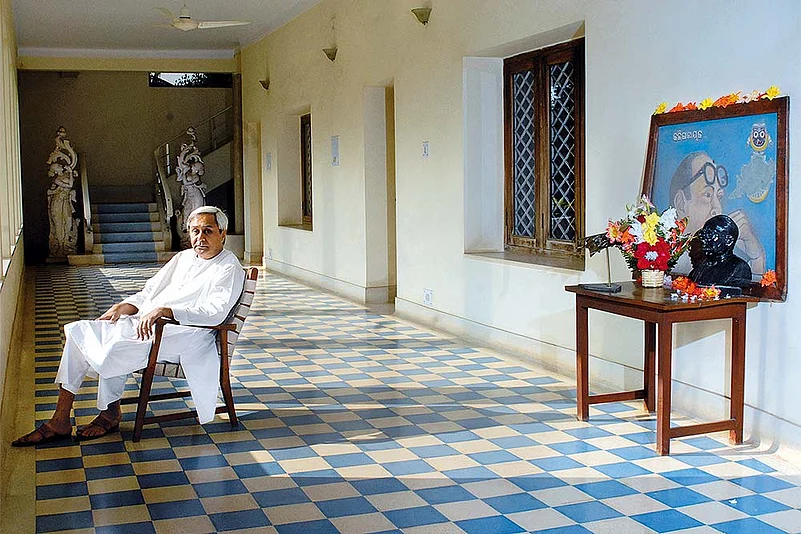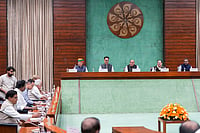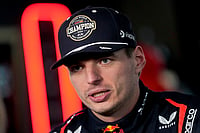The twin-engine helicopter flew low, skirting over swathes of hills, valleys and fields. Having taken off from Bhubaneswar, the chopper was headed towards Thakurmunda, a speck of a town in the state’s interiors. From that height, the ground below looked picturesque. Plantations stretched mile upon mile, punctuated occasionally by rivers that cut across the terrain before vanishing into the horizon in a serpentine maze. Rolling hills gave way to small valleys, which in turn made space for another range of hills. Hamlets peeped out intermittently, the tin and thatched roofs of ordinary huts belonging to dirt-poor families glinting charmingly under the bright sun. Narrow pathways etched magical designs on the landscape, and brimming village ponds encircled by trees and the cattle wandering about gave the impression of uninterrupted bliss.
Nothing from the top betrayed the turmoil that the people of Odisha—which accounted for 4.8 per cent of the country’s land mass and 3.47 per cent of its population—had endured in recent months. A killer cyclone had ploughed through the state in October 1999, leaving 10,000 people dead and destroying everything in its wake. From the time it was carved out as a province in 1936, Odisha has been among the poorest Indian states. Though the state is culturally rich—home to temples, textiles, breathtaking tourist spots such as the mangroves of Bhitarkanika and the classical dance form Odissi—it barely caught the attention of the rest of the country except fleetingly, when the media reported on the chronic hunger and starvation there or on a natural disaster as big as the super cyclone.
As the helicopter flew overhead that day in the year 2000, the situation below was the bleakest it had been in living memory, second it would seem only to the 1866 ‘Na Anka’ famine, which had wiped out a third of its population. Nature’s wrath, combined with administrative bungling of no lesser magnitude, had crippled the state and its people. In the weeks following the cyclone, the state’s politicians bickered shamelessly and held the administration hostage. While the incumbent Congress chief minister bumbled about, his senior party colleagues rushed to New Delhi to petition the party leadership to have him replaced, taking advantage of the chaos to push their personal agendas and chief ministerial ambitions. Relief did not reach the survivors in time and hundreds of thousands went hungry as the state administration struggled to cope with the scale of the disaster. The government abdicated its responsibility and as good as abandoned its subjects. Politicking took centrestage and the people, left to fend for themselves, were looking heavenwards for divine help when the helicopter made its low-key entry from the distant horizon.
In the helicopter, a fifty-something man, of a tall, lean frame, sat silently in the front seat, beside the pilot. But for the routine pleasantries at the start of the journey, few words were spoken. The man, in a starched white kurta pyjama, occasionally stretched his legs, perhaps silenced by the daunting challenge ahead of him.

Naveen Patnaik amidst supporters during an election campaign in 2000
Naveen Patnaik had reasons to be in a contemplative mood. He was a rank outsider who had lived most of his adult life outside Odisha, spoke no Odia and was, for good measure, a stranger to its history, culture, traditions, rituals and everything else. Yet he was on the campaign trail, hoping to become the chief minister of a state hit with the worst tragedy in recent times.
Educated at Doon School and a classmate of Sanjay Gandhi, he was more at home speaking in English with a western accent. He loved Dunhill cigarettes and enjoyed his Famous Grouse whisky every evening, a habit that his personal staff says he hasn’t given up. Just until three years ago, Naveen had been a permanent fixture in Delhi’s most exclusive party circuits and rubbed shoulders routinely with the well-heeled and powerful. He had, in his younger days, run a boutique called Psychedelhi from the premises of the Oberoi hotel and his clientele included the fabled Beatles. His circle of friends straddled the globe and his interests included books and films, landing him a small role in Merchant Ivory’s 1988 adventure film The Deceivers, which had Pierce Brosnan and Saeed Jaffrey in the cast.
In 1997, one thing led to another in quick succession and Naveen shed his jeans and T-shirt for the politician’s preferred attire—kurta-pyjama—to tap into the outpouring of goodwill for his recently deceased father, Biju Patnaik. Barely months after his father died, he contested the by-election from Aksa, the seat his father represented at the time of his death, on a Janata Dal ticket, the party his late father belonged to, and won handsomely. “I have inherited my father’s responsibilities, but no privileges,” Naveen famously told India Today magazine shortly after taking the electoral plunge. “One of the members of his [Biju Babu’s] family had to continue his legacy of social responsibility,” he said.
By December 1997, he had founded a regional outfit called the Biju Janata Dal and was re-elected as an MP in 1998 and 1999 as the country held general elections in quick succession amid political instability. But by the time Atal Bihari Vajpayee was sworn in as the head of the BJP-led NDA government in 1998, Naveen had become a BJP ally and Vajpayee rewarded him by making him the Union minister for steel and mines.
When Naveen entered politics in Odisha, he was trying to reach out to the people of his native land whose rusticity he did not share. Yet, as the son of Odisha’s legendary politician, he had been anointed by fate and destiny as the desperate state’s only possible saviour. Fed up with the games played by discredited politicians, many Odias welcomed Naveen despite his lack of Odia. They knew little about him other than that he was Biju Babu’s son. But the anonymity of his past meant a freedom from being judged. At a time when almost the entire political class was steeped in infamy, Naveen appeared to be refreshingly innocent, a breath of fresh air in a putrid environment. In more ways than one, Naveen was the Arvind Kejriwal of his time, the clean political outsider who had come to perform surgery on a malignant polity. Just as Kejriwal, the Aam Aadmi Party leader, caught the imagination of Delhi in 2015 and swept almost everyone off their feet, Naveen had Odias swooning over him.
Take for instance the rally Naveen attended early in his political career at Panikoili, which is on the national highway running through Bhubaneswar and the coastal town of Balasore further north, a must-stop for long-distance commuters en route to Kolkata for steaming hot meals at its famed dhabas. The Janata Dal hosted an anti-Congress rally in the town and Naveen came to make a speech as the party’s newly elected MP. In attendance were senior Janata Dal leaders such as Srikanta Jena, once a close aide of Biju Babu, who had risen to become the Union parliamentary affairs minister in the I.K. Gujral government in New Delhi. Jena nursed ambitions for himself in the post-Biju era and hoped to make his mark at the first major rally aimed at uniting the anti-Congress forces in the state. But the moment he began his speech, slippers and shoes of various shapes and sizes began raining down on the stage.
A career politician, Jena kept his composure and continued with his speech. But the crowd was becoming aggressive and the other leaders on the stage began getting jittery. They kept tugging at Jena’s kurta from behind, prodding him to wrap up his speech quickly. The mike was then handed over to Naveen. Naveen rose from his chair, walked towards the dais and waved at the crowd. The jeers turned into lusty cheers almost immediately. Some three years later, on his way to Thakurmunda on board the helicopter, Naveen knew he was more popular than ever. The killer cyclone had scooped up the sea and brought it some twenty-two kilometres inland at its raging peak in 1999. Now, after the waters had receded, another wave rose high: this time for Naveen.
As the town showed up in the distance, Naveen reached into his kurta pocket and pulled out a neatly folded paper that his assistant had given him. On it was written, in bold, the word ‘Thakurmunda’ in English. Naveen kept reading the name over and over again until he had memorised it.
The presence of outsiders—politicians and journalists—in the town that hit national and international headlines in 1999 for the gruesome killing in its vicinity of an Australian missionary and his two sons by the Hindu zealot Dara Singh as the three victims slept in a car, had brought out residents in droves. A mass of men, women and children waved their arms frantically in unbridled enthusiasm as the ‘famous son’ whom many saw as their one last hope stepped out from the storm of dust kicked up by the helicopter. Naveen did not disappoint. He strode to the stage prepared for him and took over the microphone. “Mere pitaji ko Thakurmunda bahut pyara tha” (My father loved Thakurmunda very much) he said softly into the microphone after the perfunctory namaskar. Naveen spoke in his gruff voice, but its effect was electrifying. The residents of Thakurmunda were ecstatic that Biju Babu had told his son about their town in the back of beyond. Whoops of collective joy erupted and the rally site resonated with chants of ‘Naveen Patnaik zindabad’. Another rehearsed line followed: “Mere pitaji ne bola tha beta Thakurmunda zaroor jana.” (My father had said, ‘Son, you must definitely go to Thakurmunda.’) The crowds were delirious with joy that the place of their birth was so dear to Biju Babu—even if his son addressed them in Hindi.
Naveen did not have to continue much longer beyond that. He already had the locals under his spell. He touched briefly on some of the things he would do—part of his poll promises—before wrapping up his speech with a namaste and another round of deft hand-waving at the crowd. He then boarded the helicopter which was to transport him to the second rally planned for the day, at Kendrapara.
The same routine was repeated. As the outskirts of the town came into view, Naveen again reached into his pocket and another piece of paper emerged, this time with the name ‘Kendrapara’ written in bold. He read it again and again as he readied to take the prominent coastal town by storm.
“Mere pitaji ko Kendrapara bahut pyara tha,” Naveen said when his turn came to address the rally. The effect of the words was the same as in Thakurmunda. The crowds turned ecstatic.
When the claimant to the chief minister’s chair presented his second line, “Mere pitaji ne bola tha beta Kendrapara zaroor jana,” the crowd went berserk and the police struggled to control the sea of humanity crushing against the barricades.
The job done, Naveen took off for Satyabadi, a town in Puri district with special significance for Odia pride. Gopabandhu Das, the state’s best-known freedom fighter, fondly remembered as ‘Utkalmani’ (jewel of Utkal), had lived and worked here, making the town a popular place of pilgrimage.
Listening to Naveen narrate what his father had told him, Satyabadi replacing Thakurmunda and Kendrapara, the locals felt more pride welling inside them. Their response was much the same as at the earlier two stopovers. Biju Babu’s heir had them virtually eating out of his hand.
It was the kind of rapturous response that politicians would die for. But Naveen had it all fall into his lap. He swept the state effortlessly. Other sons of famous parents have had similar head starts, former prime minister Rajiv Gandhi included, but few had such intense love and affection bestowed on them so unquestioningly.
















